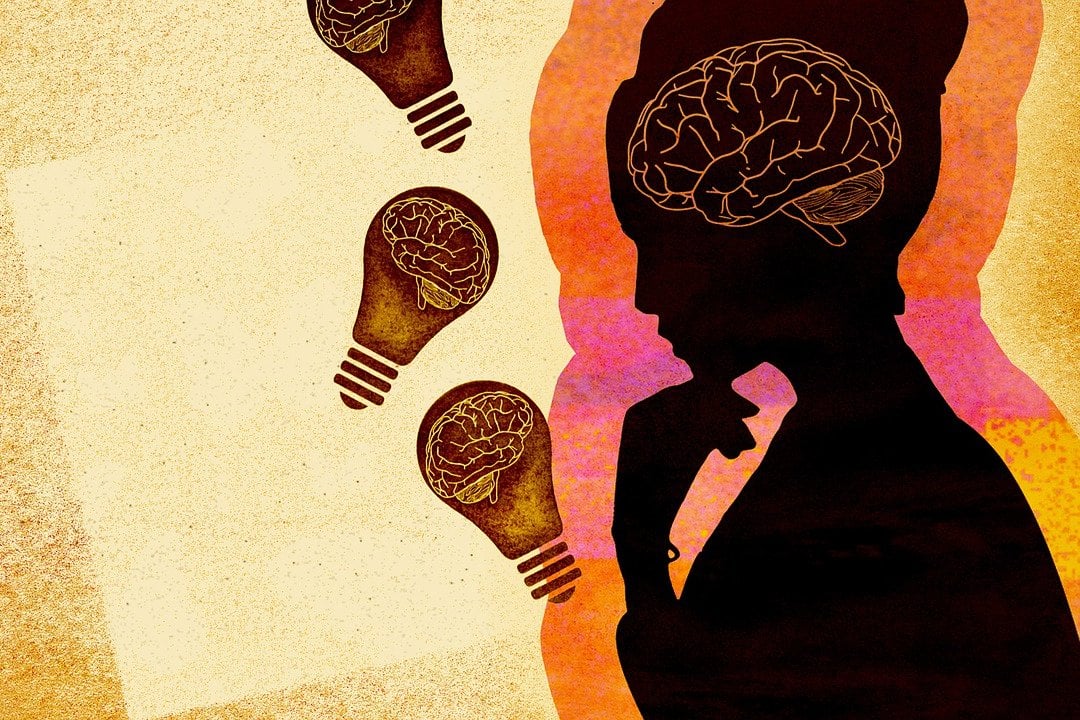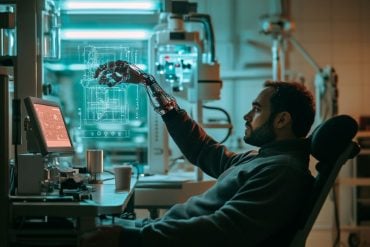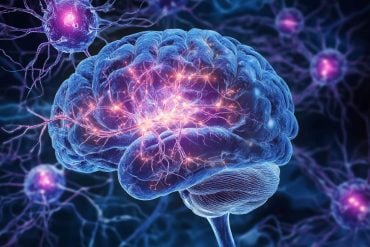Summary: A new theory of memory visualizes the brain as an organic super-computer that runs complex binary code with neurons acting like mechanical computers. The theory is based on the discovery of the protein molecule, talin, which contains switch-like domains that change shape in response to pressure in mechanical force by a cell.
Source: University of Kent
Research from the University of Kent has led to the development of the MeshCODE theory, a revolutionary new theory for understanding brain and memory function. This discovery may be the beginning of a new understanding of brain function and in treating brain diseases such as Alzheimer’s.
In a paper published by Frontiers in Molecular Neuroscience, Dr Ben Goult from Kent’s School of Biosciences describes how his new theory views the brain as an organic supercomputer running a complex binary code with neuronal cells working as a mechanical computer.
He explains how a vast network of information-storing memory molecules operating as switches is built into each and every synapse of the brain, representing a complex binary code. This identifies a physical location for data storage in the brain and suggests memories are written in the shape of molecules in the synaptic scaffolds.
The theory is based on the discovery of protein molecules, known as talin, containing “switch-like” domains that change shape in response to pressures in mechanical force by the cell. These switches have two stable states, 0 and 1, and this pattern of binary information stored in each molecule is dependent on previous input, similar to the Save History function in a computer. The information stored in this binary format can be updated by small changes in force generated by the cell’s cytoskeleton.

In the brain, electrochemical signalling between trillions of neurones occurs between synapses, each of which contains a scaffold of the talin molecules. Once assumed to be structural, this research suggests that the meshwork of talin proteins actually represent an array of binary switches with the potential to store information and encode memory.
This mechanical coding would run continuously in every neuron and extend into all cells, ultimately amounting to a machine code coordinating the entire organism. From birth, the life experiences and environmental conditions of an animal could be written into this code, creating a constantly updated, mathematical representation of its unique life.
Dr Goult, a reader in biochemistry, said: ‘This research shows that in many ways the brain resembles the early mechanical computers of Charles Babbage and his Analytical Engine. Here, the cytoskeleton serves as the levers and gears that coordinate the computation in the cell in response to chemical and electrical signalling. Like those early computation models, this discovery may be the beginning of a new understanding of brain function and in treating brain diseases.’
About this memory research news
Source: University of Kent
Contact: Sam Wood – University of Kent
Image: The image is in the public domain
Original Research: Open access.
“The Mechanical Basis of Memory – the MeshCODE Theory” by Ben Goult. Frontiers in Molecular Neuroscience
Abstract
The Mechanical Basis of Memory – the MeshCODE Theory
One of the major unsolved mysteries of biological science concerns the question of where and in what form information is stored in the brain. I propose that memory is stored in the brain in a mechanically encoded binary format written into the conformations of proteins found in the cell-extracellular matrix (ECM) adhesions that organise each and every synapse.
The MeshCODE framework outlined here represents a unifying theory of data storage in animals, providing read-write storage of both dynamic and persistent information in a binary format. Mechanosensitive proteins that contain force-dependent switches can store information persistently, which can be written or updated using small changes in mechanical force.
These mechanosensitive proteins, such as talin, scaffold each synapse, creating a meshwork of switches that together form a code, the so-called MeshCODE. Large signalling complexes assemble on these scaffolds as a function of the switch patterns and these complexes would both stabilise the patterns and coordinate synaptic regulators to dynamically tune synaptic activity. Synaptic transmission and action potential spike trains would operate the cytoskeletal machinery to write and update the synaptic MeshCODEs, thereby propagating this coding throughout the organism.
Based on established biophysical principles, such a mechanical basis for memory would provide a physical location for data storage in the brain, with the binary patterns, encoded in the information-storing mechanosensitive molecules in the synaptic scaffolds, and the complexes that form on them, representing the physical location of engrams.
Furthermore, the conversion and storage of sensory and temporal inputs into a binary format would constitute an addressable read-write memory system, supporting the view of the mind as an organic supercomputer.







